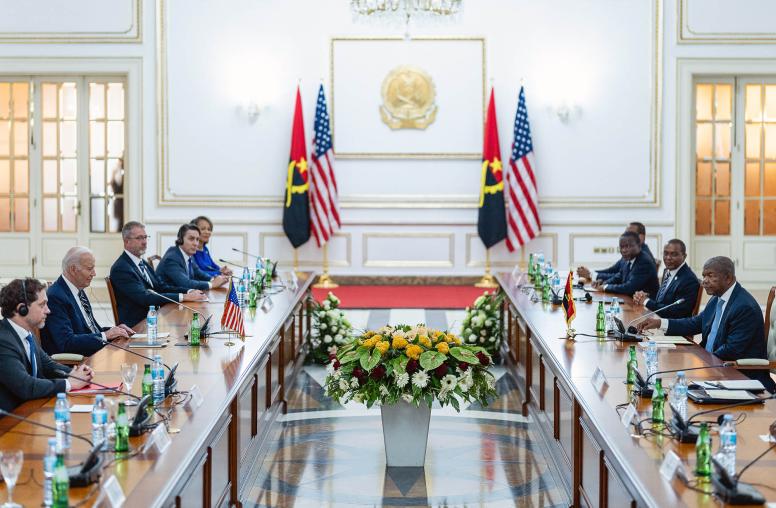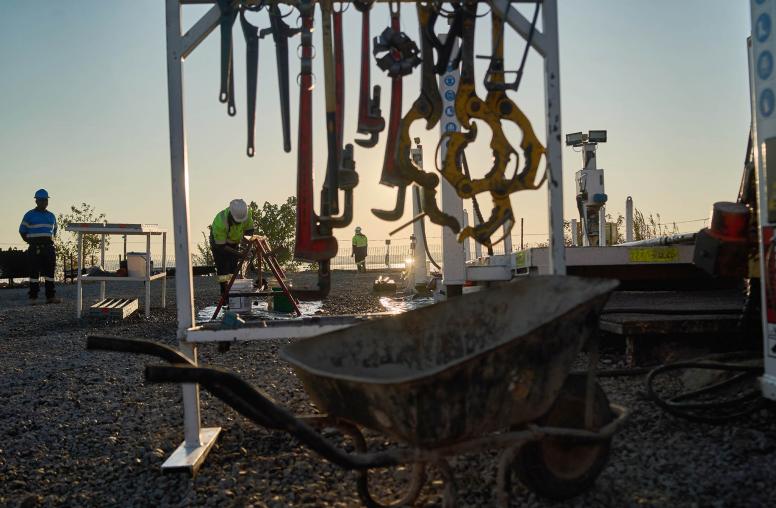AIDS and Violent Conflict in Africa
In light of two disturbing trends--the spread of HIV/AIDS and increases in violent conflict--which are dominant features of today's Africa, the United States Institute of Peace brought together a panel of specialists in May 2001 to examine an often overlooked aspect of the pandemic: the nexus between conflict and AIDS. This report is a synthesis of the most salient points broached during this briefing combined with pertinent supporting information. It concludes with nine policy recommendations.

Summary
- In sub-Saharan Africa there are more than 25 million Africans infected with HIV/AIDS (70 percent of the world's cases) and 17 million dead; on its current trajectory, by 2010 the disease will decrease life expectancy on the continent to levels found at the beginning of the last century.
- Many governments, international organizations, and NGOs have joined a UN-led movement to address the causes and effects of AIDS in Africa. It now appears that the international community is fully conscious of the need to commit resources to turn the tide against this plague.
- The decade of the 1990s witnessed a steady climb in violence across sub-Saharan Africa, with the number of states at war or with significant lethal conflicts doubling from 11 in 1989 to 22 in 2000.
- The relationship of the AIDS pandemic to violent conflict in Africa is far too complex to be expressed in simple cause-and-effect terms. Instead it must be addressed in terms of: (1) how the explosion of HIV/AIDS may contribute to further instability and conflict on the continent in coming years, and (2) how instability and violence encourage conditions favorable to the spread of the HIV virus.
- AIDS most frequently strikes at the most productive members of society, those 15-45 years old that are critical to the development of the African state and the stability of the African family.
- As AIDS advances in a society it weakens the state's economic capacity, stealing away its human capital, cutting into its tax base, and drying up foreign investment. Power struggles over the state's limited resources increase the likelihood of violent conflict.
- The disease leaves in its wake an explosion of the orphan population, thereby increasing the ranks of poverty-stricken children in Africa.
- Warfare is an amplifier of disease, creating ideal conditions for its spread, including poverty, famine, destruction of health and other vital infrastructure, large population movements, and the breakdown of family units and thus protective networks for women.
- The prevalence of HIV infection in a number of African militaries is extraordinarily high, perhaps up to 60 percent in Angola and the Democratic Republic of the Congo.
- Sexual harassment and exploitation of mobile populations by soldiers and others is commonplace while refugees often have no recourse to legal or social protections.
About the Report
In light of two disturbing trends--the spread of HIV/AIDS and increases in violent conflict--which are dominant features of today's Africa, the United States Institute of Peace brought together a panel of specialists in May 2001 to examine an often overlooked aspect of the pandemic: the nexus between conflict and AIDS. This report is a synthesis of the most salient points broached during this briefing combined with pertinent supporting information. It concludes with nine policy recommendations.
Participating in the panel were David Gordon, national intelligence officer for economic and global issues, National Intelligence Council; Thomas Homer-Dixon, director of the Peace and Conflict Study Program, University of Toronto; Princeton Lyman (moderator), formerly U.S. ambassador to South Africa and currently executive director, Global Interdependence Initiative, Aspen Institute; Millicent Obaso, manager of the Africa Initiative, American Red Cross; and Andrew Price-Smith, assistant professor of government and international affairs, University of Southern Florida.
The panel was organized by Institute staff members Timothy Docking and Joseph Klaits, Jennings Randolph Program for International Peace, and Sheryl Brown and Burton Edwards, Office of Communications. The report was written by Timothy Docking.
The views expressed in this report do not necessarily reflect those of the United States Institute of Peace, which does not advocate specific policies.



